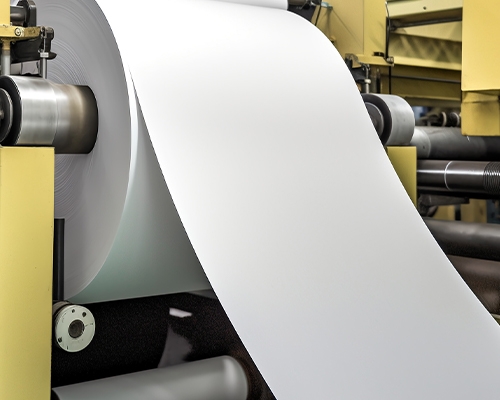The paper industry is the third-largest user of titanium dioxide. As a paper filler, it is primarily used in high-grade and thin papers. Incorporating titanium dioxide into paper enhances whiteness, provides good gloss, high strength, smoothness, print resistance (preventing ink penetration), and lightweight properties. For papermaking, untreated anatase titanium dioxide is generally used, which also functions as a fluorescent whitening agent to improve paper brightness. However, laminated paper requires surface-treated rutile titanium dioxide to meet lightfastness and heat resistance requirements.
1. Standard Paper
Solid powder or slurry forms of uncoated anatase/rutile titanium dioxide can be added during production. Whether using uncoated anatase or rutile, critical performance requirements include excellent dispersibility in water, minimal coarse particles, and strong adhesion to paper fibers. (Jiangliang Chemical Powder Division recommends prioritizing these properties.)
2. Uncalendered Wood-Free Paper
Also known as bond paper, this high-grade paper is used for letters, business documents, and photocopying. Titanium dioxide is added in slurry form at low dosages (<5%). Key requirements include opacity, brightness, adhesion, optical brightness coefficient, and abrasion resistance. Anatase is preferred when abrasion resistance is prioritized.
3. Calendered Wood-Free Paper
Primarily used for premium magazines and advertising materials, this paper employs coated titanium dioxide slurries. Critical properties include opacity, brightness, and tinting strength.
4. Calendered Wood-Containing Paper
Used for catalogs (mail-order inserts and newspaper supplements) and general magazines. Titanium dioxide is mainly applied in the coating layer. The base paper exhibits low inherent opacity and brightness, which are significantly enhanced by titanium dioxide. Here, titanium dioxide primarily delivers opacity and brightness.
5. Coated Paperboard
A rigid thin board for packaging applications like small boxes. Titanium dioxide is applied only to the surface. Due to the extremely low brightness of the base board, high titanium dioxide loading (>20%) is required. Opacity to mask the base board is the paramount performance criterion.
6. Bleached Paperboard
Used for liquid/solid packaging containers (e.g., cartons, cups, foldable boxes). Titanium dioxide is incorporated into the coating at lower loadings than coated paperboard. Key requirements are brightness and color consistency.
7. Laminated Paper
Applied in furniture and flooring, titanium dioxide is used in slurry form with loadings exceeding 20%. Critical performance metrics include opacity, gloss retention, color stability, and adhesion.

